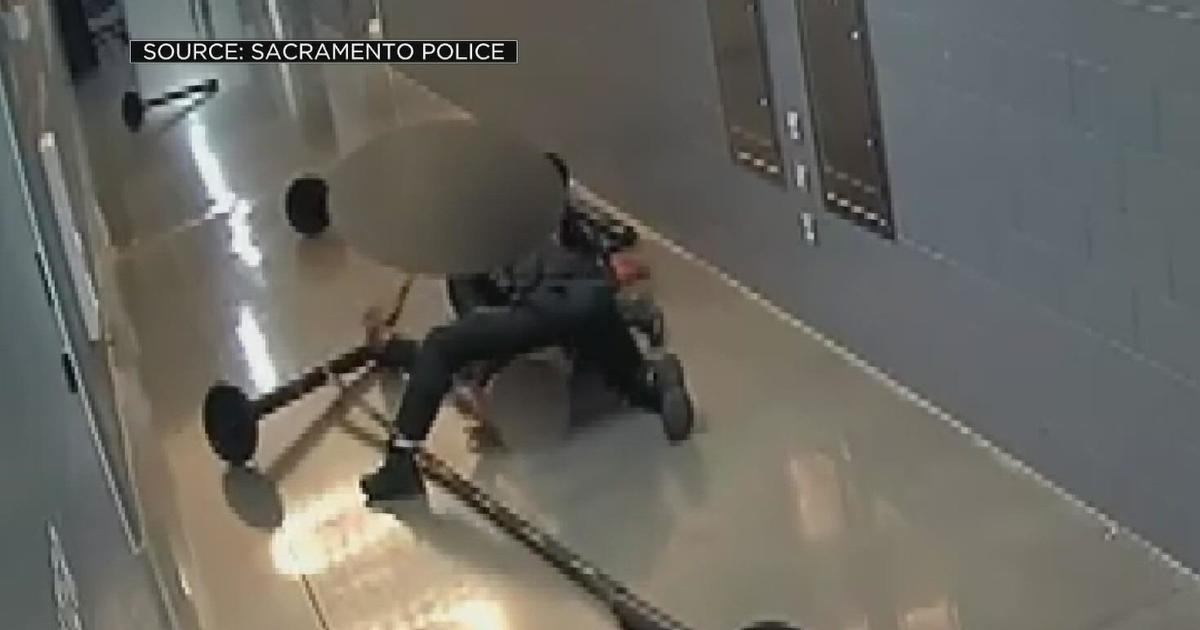Clarity Of Lake Tahoe Best Since 2002
RENO, Nev. (AP) — Lake Tahoe's clarity last year was the best it's been in a decade and scientists say the continued improvement has them increasingly optimistic that regulating land use throughout the basin and taking other steps to protect the mountain waters are paying off.
Lake clarity averaged 75.3 feet in 2012, an improvement of 6.4 feet from the year before, according to the UC Davis Environmental Research Center and Tahoe Regional Planning Agency.
That's the best it's been since 2002 when the 10-inch white plate called a Secchi disk that is used to measure clarity was visible as deep as 78 feet. It's also a 10-foot foot improvement from the all-time average low of 65.1 feet recorded in 1997-98.
Scientists say the alpine lake's waters were clear enough to see more than 100 feet down back in 1968 before development accelerated in the Tahoe Basin. A steady decline over the next 15 years dropped visibility as shallow to 73.4 feet in 1983.
Stepped up efforts to protect the lake over the past decade and a half have ranged from banning certain jet skis that dump excessive fuel in the waters to regulating construction to minimize soil erosion and improving roads that add to runoff and promote algae growth, one of the biggest threats to clear waters.
"There is now growing belief that managing for clarity is possible," said Geoffrey Schladow, director of the UC Davis Tahoe Environmental Research Center. He's especially encouraged by the improvement in winter clarity measurements from December 2011 to March 2012 when the average reading was 88.3 feet, the best since 1996.
John Reuter, associate director of the UC Davis Tahoe Environmental Research Center, said he was "absolutely thrilled" by the latest results. He said winter readings are important because most urban storm water runoff occurs then when rain and snowmelt carry small, inorganic particles from roads and developed areas into the lake.
"You would expect during an especially wet year like we had there would be more of the flow to transport pollutants into the lake and the streams. The fact the clarity actually improved during a wet year is a very good sign," Reuter said in a telephone interview.
"I don't think we can say all the work is done here, but I think it is a good sign that the work that is being done should continue and it gives us hope it can work in the long run," he said.
The azure lake about 30 miles southwest of Reno sits in the Sierra Nevada at 6,225 feet above sea level with a depth of about 1,600 feet, the 11th deepest lake in the world and second deepest in the United States. It has enough water to cover the entire state of California with more than a foot deep and would take 650 years to refill naturally.
More important than annual improvements is the long-range trend showing the lake's loss of clarity has leveled off the past decade.
"Many years ago some people didn't think the lake could actually be restored. It is so deep and there is so much there," Reuter said. "But what we are seeing is what you would expect to see if restoration efforts were taking hold."
Schladow said the biggest challenge today is the absence of monitoring of the effectiveness of projects aimed at slowing runoff.
"If you aren't measuring something, you can't manage it," he said Wednesday. "It would be great to have two or three sites where we monitor what is coming into the lake so if you reduced input by 20 percent and the clarity improved, you would have your smoking gun."
"If these measurements hadn't been taken for the last 45 years, we'd still be having an argument with someone who would say it is as clear now as it was 45 years ago. Now we can quantify it and say we have lost a third of the clarity, but that rate has slowed now in the last 10 years and hopefully it is going to be coming back in the coming decades."
Copyright 2013 The Associated Press.



